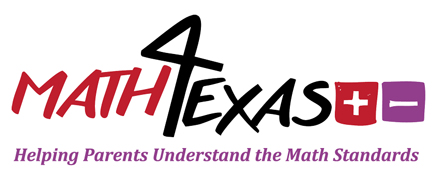T.I.P.S.
-
 Students will use their prior experiences with fractions to count fractional parts beyond one whole. Students should count the fractional parts up to one whole using concrete models to determine the number of parts that equal one whole. For example, if there was one whole, two-halves equal one whole, four-fourths equal one whole, and eight-eighths equal one whole. If there are three wholes, students can count the fractional parts as one-half, two-halves, three-halves, four-halves, five-halves, six-halves. Students should understand that the numerator could have more parts than the denominator depending on how many wholes are present.
Students will use their prior experiences with fractions to count fractional parts beyond one whole. Students should count the fractional parts up to one whole using concrete models to determine the number of parts that equal one whole. For example, if there was one whole, two-halves equal one whole, four-fourths equal one whole, and eight-eighths equal one whole. If there are three wholes, students can count the fractional parts as one-half, two-halves, three-halves, four-halves, five-halves, six-halves. Students should understand that the numerator could have more parts than the denominator depending on how many wholes are present.
Example
-
You may need paper and pencil to complete this activity.Your class is having a party for meeting their reading goal! Your teacher made two sheet cakes for the party as shown below.a) On your paper, draw the cakes and lines to cut each cake into fourths.
b) If one cake represents a whole, write a sentence to describe the number of fourths in one cake.
c) There are 7 students in your class and each student ate one-fourth of a whole cake. Shade in and count how much cake was eaten by your class. Then describe how you counted and how much cake was eaten by your class.d) Can you tell from your model how much cake is left for the teacher?
Resources
-
Click on the following links for more information.
TEKS
-
2.3 Number and operations. The student applies mathematical process standards to recognize and represent fractional units and communicates how they are used to name parts of a whole.(C) use concrete models to count fractional parts beyond one whole using words and recognize how many parts it takes to equal one whole





 Click
Click 

